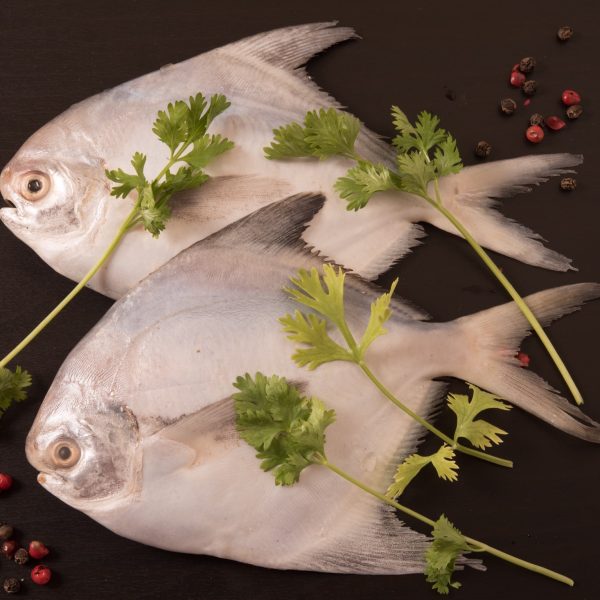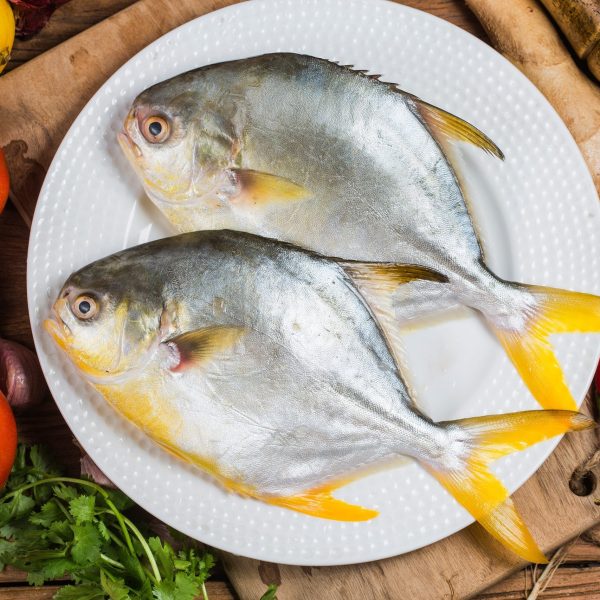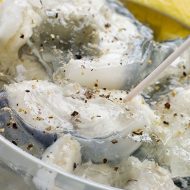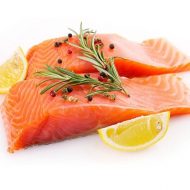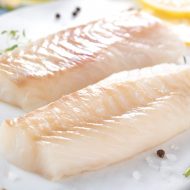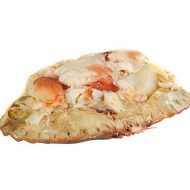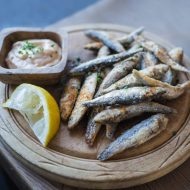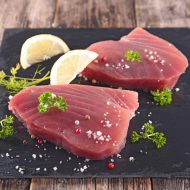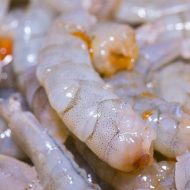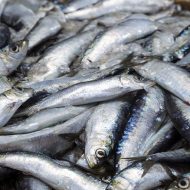Pomfrets are also one of India’s most prized dishes. All together! Fillets may be scored before coating them with strong curry pastes filled with coriander, cumin seeds, tamarinds, turmeric cinnamon and chillies for frying, then baking or steaming it.
There are three main types of pomfret today: Silver, Black and Golden.
Silver Pomfret
From the Persian Gulf to Borneo, Silver Pomfret is a major commercial catch. These tropical fish can reach up to 23 inches in length and usually weigh 9-1/2 ounces, but wild-caught Indian ones are only 10 inches long on average, weighing 8 ounces or less occasionally.
Black Pomfret
Black pomfrets are a species of carangid that are commonly found on coral reefs in the Indian Ocean and the Western Pacific. While able to reach a length of up to 29 inches, the average body length is only 101/2 inches, and it usually weighs just over 15 ounces at most, making it a large fish for its size. Several species of this fast-breeding fish are found all around Western Asia, including the Persian Gulf, Indian Ocean, and the Bering Sea. They thrive in low-oxygen underwater environments where they can find small crustaceans near coral pillars or seaweed beds.
Golden Pomfret
The golden pomfret is a fish that’s more common in the market than any other type of pomfret. They can grow to be 25 inches long, but usually, they are only 12-1/4 inches and weigh 1 pound 9 ounces. The meat has white flesh, which makes it soft when cooked. Many people would recommend frying frozen ones because fresh ones don’t stay good for very long after being caught.
Processing Pomfret
To create a quality frozen commodity, careful handling of the Pomfrets is essential. It is important that careful care and storing be used when dealing with any form of fish to minimise the risk of food contamination and ensure a safe and high-quality product.
Proper preparation of fresh pomfrets for storage would preserve them and retain their quality for a prolonged period. As quickly as possible, freshly captured pomfrets will be gutted and washed and then preserved at the proper freezing temperature.
At 0°F or less, the pomfret would be frozen in a freezer.
Benefits Of Frozen Pomfret
The Pomfret has many great benefits for the body. The Pomfret is a great source of calcium, vitamins A and D, and B-vitamins such as Vitamin B12, which promote healthy skin!
This fish also offers iodine – an essential nutrient needed to produce thyroid hormones that regulate metabolism in your cells. Not only does this provide energy, but it can even help you think better too with its brain food properties!
Pomfret is a tasty, healthy option for the seafood-loving individual. For just 4 ounces of pomfret, you can get nearly 15% of your daily value in omega 3 fatty acids and help promote cardiovascular health with its heart rate variability increasing properties!
The Pomfret fish has many benefits that one might not find out about unless they were told or read up on it themselves; however, when looking at this little silverfish, there are plenty of things to come away from, such as high protein content and being rich in Omega-3s which promotes good cardiovascular health.
Eating fish every day is a way to make your brain healthier. Fish contains omega-3 fatty acids that can improve memory by protecting the cells in our brains from damage or deterioration, such as Alzheimer’s disease, which attacks those areas and causes severe dementia-like symptoms.
Why Buy Frozen Pomfret From Us?
Frozen Fish Direct is the leading provider of seafood in the United Kingdom and a single location for a wide range of fish and seafood to wholesale and retail firms. The Frozen Pomfrets from us is the healthiest option to make tasty dishes from your kitchen.
We specialized in sustainable seafood and provided the highest quality seafood products. Our frozen pomfret is sustainably harvested and flash-frozen to give in all the fresh flavour.
Frozen Fish Direct offers vast amounts of easy-to-prepare, pre-packed fresh frozen Pomfrets.
At rates of tremendous value, we sell only high-quality, nutritious seafood.
Frozen Pomfret Nutritional Facts
A 1-ounce serving of Pomfret provides:
Calories: 96
Total Fat: 1.7g
Saturated Fat: 1.1g
Cholesterol: 44mg
Iron: 2mg
Protein: 19g
FAQ’s
What does Pomfret fish taste like?
The taste of pomfret is unlike any other. Its silky texture and slight sweetness make it an irresistible dish!
Which Pomfret is better white or black?
Many factors make a Pomfret the perfect fish. The most notable factor is its low oil content, which means it can be used in more dishes without compromising on flavour.It's also quick to cook and does not require marinating before cooking as other white fishes do! White pomfrets have thin meat so they're an ideal choice for delicate sauces or making salads with vegetables (you'll find plenty of recipes online).Black Pomparfets tend to work well with creamy sauce bases as their thick flesh stands up better than white varieties when cooked into them.Both types will keep fresh at room temperature if refrigeration space is limited - but you should eat silver ones in moderation while trying to conceive because some people report
Is Pomfret a white fish?
This piece of fish is considered a prized one, as its white meat has central and side bones. It doesn't have the unpleasant taste that many other fishes do.
Is Pomfret fish good for diabetes?
The Pomfret fish is best for people with diabetes. It has lower fat content than mackerel and can be served whole, fried, roasted, grilled or boiled so that it doesn't come in contact with the cooking fats which could cause weight gain and contribute to high blood sugar levels.

